Rochester Radiology Associates (RRA) is a private combined DR and IR practice located in upstate Rochester, New York. RRA is composed of 24 DRs, seven IRs and four full-time physician assistants in a democratic practice covering the entire Rochester Regional Health System, including its flagship location Rochester General Hospital. We cover IR services fully at one other hospital and get IR referrals from smaller hospitals in our system, while our DR services cover four hospitals and numerous outpatient imaging centers.
In our practice, we combine the world of a traditional private practice radiology group with many features of an academic IR service. Our group has run a diagnostic radiology residency for over 40 years, and we have recently started an IR residency (including Integrated, Independent and ESIR tracks). RRA is a unique practice that straddles two different worlds, which as a result offers unique challenges.
Choosing the right practice
Given the amazing amount of thought process that should go into choosing a practice type out of fellowship, I am bewildered by how naïve I was going into the process back in 2009. Academic or private practice, IR only or DR/IR group, established clinic, number of IRs present to help grow my skills, practice type and hospital needs, urban vs. suburban, ability to teach and/or conduct research, and support of DR partners for growth—all decisions that I made, though unknowingly at that time.
Jobs that I was inquiring into at the time included a major academic medical center in a metropolis, an academic center in a medium-sized city, a hybrid private practice teaching residents, a progressive clinically-based IR practice, a DR/IR megagroup and finally a practice whereby I would be reading CTs and plain films in between doing PICC lines while someone watched me via camera (sadly, not an exaggeration). How could I know what to look for when I didn’t know what I actually wanted?
In hindsight, I do believe that I lucked into nearly everything that I wanted. I always advise my residents now to choose their future job based on the following three different aspects and how you value them: location, practice type and compensation. Thinking back, location for me was interesting as I did not think that a medium-sized city in upstate New York would meet my desire for a more cosmopolitan lifestyle, but now that I have a family and greys in my beard, I realize how fortunate I am to live in a friendly city that is affordable, diverse and inclusive, and where patients are truly grateful for their care. Salary and compensation were not a major priority for a quixotic younger self at that time, which is for the better as my older self may have made different choices.
Which leaves us with practice type. I truly did not understand that besides the major differences between academic and private practice, there were so many nuances in how practices are run. At the time, I thought I wanted:
- To be able to provide clinical patient-focused care, or at least be given the tools so that work could be put in to be able to build one over time.
- To be able to see patients in an outpatient clinic and be “their doctor”.
- The ability and referral base to perform complex procedures.
- The ability to perform nearly 100% IR.
- A health system that would support IR via finances and staffing and that would want to expand over time.
- A system where I would not have a hostile relationship with vascular surgery.
- To be able to teach at least DR residents, if not IR fellows.
- A group that is democratic but with strong leadership.
- Lastly, I wanted a practice that was not fully established, but rather one that I could help mold and flourish.
Today, I am fortunate enough to have found a practice that meets all of these qualifications—and has allowed me to grow and create opportunities. Through my position with RRA, a democratic practice, we have grown an outpatient IR clinic, created an independent practice called The Vein Institute, confer on all our patients, and run a robust DR and IR residency program. We are a hybrid DR/IR program with a finger on the pulse of both private and academic work—truly, I was able to achieve the best of both worlds.
Operations
The current iteration of our IR service started in 2000 when Jonathan Broder, MD, was hired out of his IR fellowship at Albany Medical Center. After growing the service from performing basic lines and biopsies to performing much more complex angiographies and interventions, he was joined by Atul Gupta, MD, in 2004. By 2009, they had created a busy interventional service but still had to take IR call or backup IR call every other night to support the three neuroradiologists who were also part of the IR call pool.
To continue the growth of the IR division, I was hired in 2009 directly out of my fellowship, followed by Michael Rivero, MD, in 2010. In the span of a year we doubled our IR faculty and were able to let the neuroradiologists out of the IR call pool, standardizing both our daytime and call IR services. This was critical for our growth and reputation within the hospital system as we sought to provide the highest level of IR service.
As we grew and started our vein practice, we hired our fifth IR, Donnette Dabydeen, MD, who joined with a specialty interest in mammography.
Last year, as we expanded IR services to the second hospital in our system, we hired Ihab Akladious, MD, who was previously our chief resident before going on to a fellowship at Mount Sinai, and have recently hired Garrett Schneider, MD, another former chief resident who completed his fellowship in Peoria.
As a private radiology group, RRA has had a professional services agreement with the Rochester Regional Health System to provide all radiology services for the past 45 years. While previously covering only the main hospital and its single outpatient imaging office, we now cover four inpatient hospitals and five outpatient imaging sites for both IR and DR services. IR at Rochester General Hospital is also the hub for all IR referrals across the system.
One of the biggest achievements—and struggles, in a DR world—has been with our desire to grow clinically. Converting from performing procedures that were sent to us to becoming a self-sustaining, fully clinical IR service has been a labor of love. We now consult on all of our patients, with the EMR listing “Consult Interventional Radiology” rather than any procedure “orders,” run a full outpatient IR clinic, admit patients as necessary, have a nurse navigator and not only participate in but are a vital piece in all multidisciplinary conferences.
However, doing the above takes a lot more staff than simply doing procedures, and that extra work (though helped greatly by our IR residents and physician assistants [PAs]) is work that is much more difficult to define in the DR language of reading lists and professional work relative value units.
One of our latest endeavors is a new freestanding IR clinic that is housed with our PET/CT, which we are trying to increase from a twice-weekly clinic to a full-time resident-run clinic, all of which is in addition to our fully staffed, separate Vein Institute.
The Vein Institute
Upon joining RRA, one of my passions was growing the venous aspect of our practice, including chronic superficial venous insufficiency (varicose veins), pelvic congestion and deep venous disease. After initially performing venous procedures in a makeshift room at our outpatient imaging center, the practice began to grow exponentially. In 2010 we moved these procedures to a site away from the hospital, hired a dedicated PA and opened The Vein Institute. In 2019, we moved again to a larger office.
There was more than a dollop of naivete in thinking that growing a successful private, independent office could be done with just a great medical practice coupled with rudimentary skills in management and business. Learning about profit and loss statements, budgeting down to the penny, and going door to door to talk to potential referrers are challenging enough. Without a dedicated practice manager, additional management issues included advertising directly to patients, buying equipment, personnel decisions and dealing with shocking paradigm changes such as COVID-19 as an independent medical practice.
All of this has led to copious stress, especially with the anxiety of trying to keep a small business afloat during COVID-19 shutdowns, balancing what is best for patients and safety with financial survival. But through the highs and lows, the end-result of having a practice where you can be the expert and control all aspects of your practice without bureaucratic impediment is truly unparalleled.
Training
As a private radiology group, RRA has run a successful DR residency program for over 40 years. In my early experiences, most residents were planning to go into DR and had little IR experience or interest. However, as I got involved in the DR residency interview process, I started recruiting one or two residents each year who had a strong interest in IR. There were two factors that I sold: 1) residents would have clear access to cases as there were no IR fellows and would thus be ahead of the game before starting their IR fellowship, and 2) they would simultaneously be learning how to be a successful high-volume private-practice DR. This pitch stemmed from my growing realization that most IRs in the United States are in private practice attached to a radiology group and will regularly have diagnostic duties, despite receiving vastly different training to prepare them for that work.
Having a practice where you can be the expert and control your practice without bureaucratic impediment is truly unparalleled.
As this DR interest in IR grew every year from 2013 through 2016, it became the norm that two of the four residents would do an IR mini-fellowship with us before moving on to another academic center for their IR fellowship. This created a culture where we were, in essence, running a quasi-IR fellowship with high-level residents, many of whom were first operators on complex cases. My partners and I found it gratifying to be teaching IR at such a high level.
When IR became a primary specialty, we applied and were approved to be a new residency site—one of the only community-based, non-university programs, as well as one of the few who had not had a prior IR fellowship.
After building it up over the past 4 years, we now have one resident a year in the Integrated IR program, ESIR and Independent IR program. In June 2020, we graduated our first Integrated IR resident, Radu Serban, MD, amidst the COVID-19 pandemic.
Challenges
Like similar radiology groups, the recent expansion of our health system has led to both excitement and growing pains in figuring out how to keep the same level of IR care across multiple locations, keeping or improving our clinical presence while increasing patient load and procedures, and balancing the need for more IRs to cover our busy call while still allowing them to practice mostly IR.
We have found this last challenge especially vexing and have added more IRs to the call pool. This also helps us get days off, since four IRs are needed to cover our IR service daily: two at our main hospital (including clinic), one at our second hospital and one at our vein clinic. Conversely, each added IR will decrease the amount of time each of us are on an IR rotation, and will likely increase the amount of DR we do. Finding the sweet spot in balancing IR call burden without sacrificing IR-focused practice has been like trying to hit a moving target, but it seems that we are close.
Other issues that I have encountered in this hybrid practice include performing many of the requirements of an academic residency without the built-in support of a university, such as having to fight for administrative help or having to work hard to get admin time. Additionally, relearning the way we practice has been difficult as we transition to a completely resident-run IR service (including having residents be primary operators and see all patients in clinics), but it has been gratifying.
Finally, COVID-19 has exposed how challenging it is to be an independent practice in a hospital-system-driven world, as well as the stress of taking care of not only your patients but your staff and the financial well-being of your practice.
The value of partnership
I often realize how lucky I am to have joined such a democratic radiology group, where every partner is equal. We split all compensation equally, with the ethos that everything we do as individuals is for the collective good of the group and the betterment of our patients. There are no incentives or perks for leadership roles such as chair, group president or program director, nor for other time-consuming projects.
Equality also means that, at a partner meeting, a junior partner has just as much voice and vote as our most senior partner. While some could argue that we are too democratic on occasion, it has worked for our group, as we are happy and are able to provide truly outstanding patient care. A few years back, a radiology consulting firm we brought in noted that, as a radiology group, they were surprised by how harmonious and content we were in a macro sense. I believe that is because of our core values as a partnership and valuing our group over the individual. And that is why I am so proud to be a part of this practice.
Listen to Dr. Pyne discuss his practice and advice he gives to IRs-in-training on The Kinked Wire at bit.ly/KWire-011.



